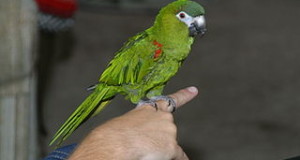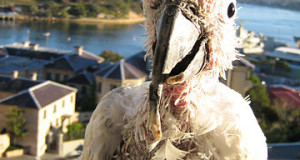 We’ve known for some time now that the eyes of Budgerigars and African Gray Parrots are UV-sensitive and can detect UV light. Humans cannot, but like parrots we are active by day and exposed to UV light throughout our lives. In many cases, parrot and human life-spans are similar in length, yet, in contrast ourselves, our avian friends’ eyes do not suffer UV damage. A study at the University of West Australia is seeking to find out why.
We’ve known for some time now that the eyes of Budgerigars and African Gray Parrots are UV-sensitive and can detect UV light. Humans cannot, but like parrots we are active by day and exposed to UV light throughout our lives. In many cases, parrot and human life-spans are similar in length, yet, in contrast ourselves, our avian friends’ eyes do not suffer UV damage. A study at the University of West Australia is seeking to find out why.
UV Light and Bird Behavior
UV light is very important to Budgerigars…with the aid of UV sensitive eyes, they see the world differently than we do. In fact, the glow a male’s feathers takes on in the presence of UV light influences his suitability as a mate in the eyes of females.
Other birds utilize UV light as well – the nestlings of some finches sport beak flanges that reflect UV, thereby helping parents to deliver food in dark nest hollows.
New Findings and Future Work
University of West Australia ornithologists suspected that other parrots may be UV sensitive as well. Writing in a recent (August, 2010) issue of The Proceedings of the Royal Society, they report that the Kea and all 13 species of Macaws, Rosellas, Amazons and Cockatoos that were tested did indeed sense UV light.
 As parrot eyes are somewhat similar to our own, it is hoped that further study will “shed some light” on the prevention of UV damage in human eyes. This is particularly important today, when it appears that increased UV radiation is reaching the earth.
As parrot eyes are somewhat similar to our own, it is hoped that further study will “shed some light” on the prevention of UV damage in human eyes. This is particularly important today, when it appears that increased UV radiation is reaching the earth.
Research of this nature illustrates the importance of preserving each and every animal and plant species, if for no other reason (but there are many, of course!) than for as yet undiscovered medical value that so many may have. Considering that at least one third of the world’s parrots are threatened with extinction, and that numerous others are quite rare, this is a lesson we cannot afford to ignore.
Further Reading
Please see the following articles for information on providing the proper lighting to pet birds and the role of UV light in bird health:
Color Vision in Birds – Improving our Pet’s Quality of Life
Crimson Rosella images referenced from wikipedia and originally posted by Noodle Snacks
Kea images referenced from wikipedia and originally posted by Peti Deuxmont
 That Bird Blog – Bird Care and History for Pet Birds
That Bird Blog – Bird Care and History for Pet Birds



